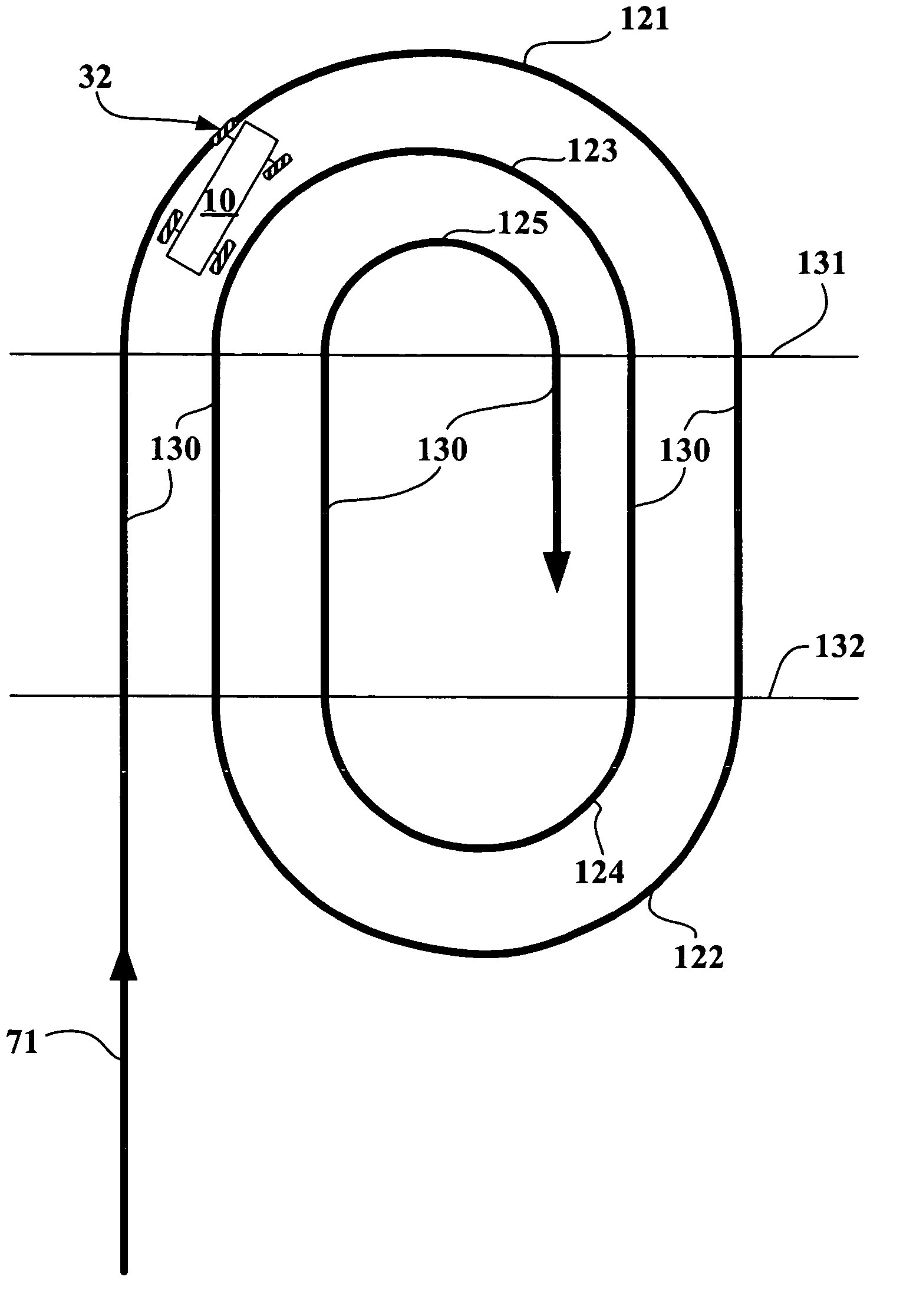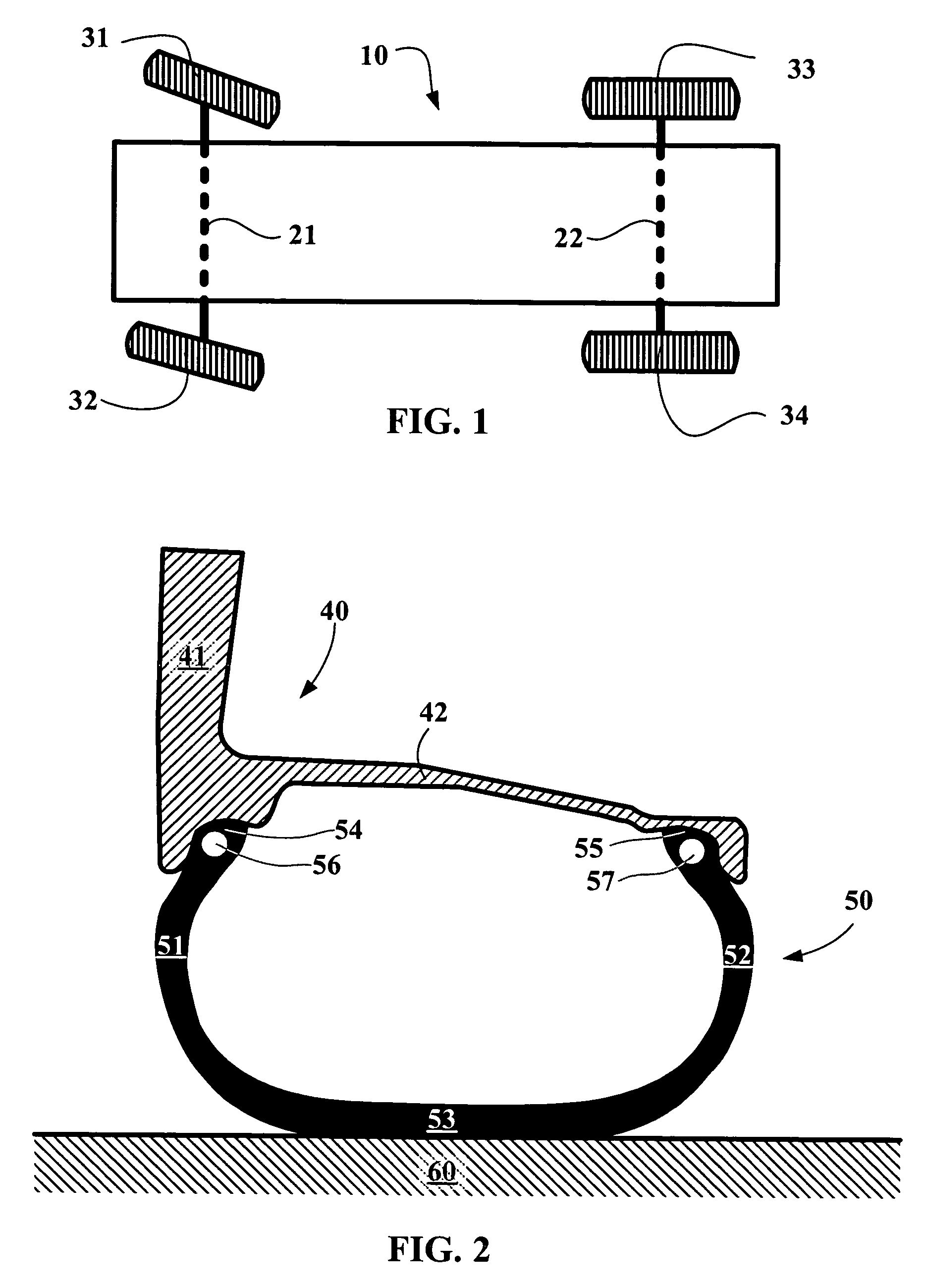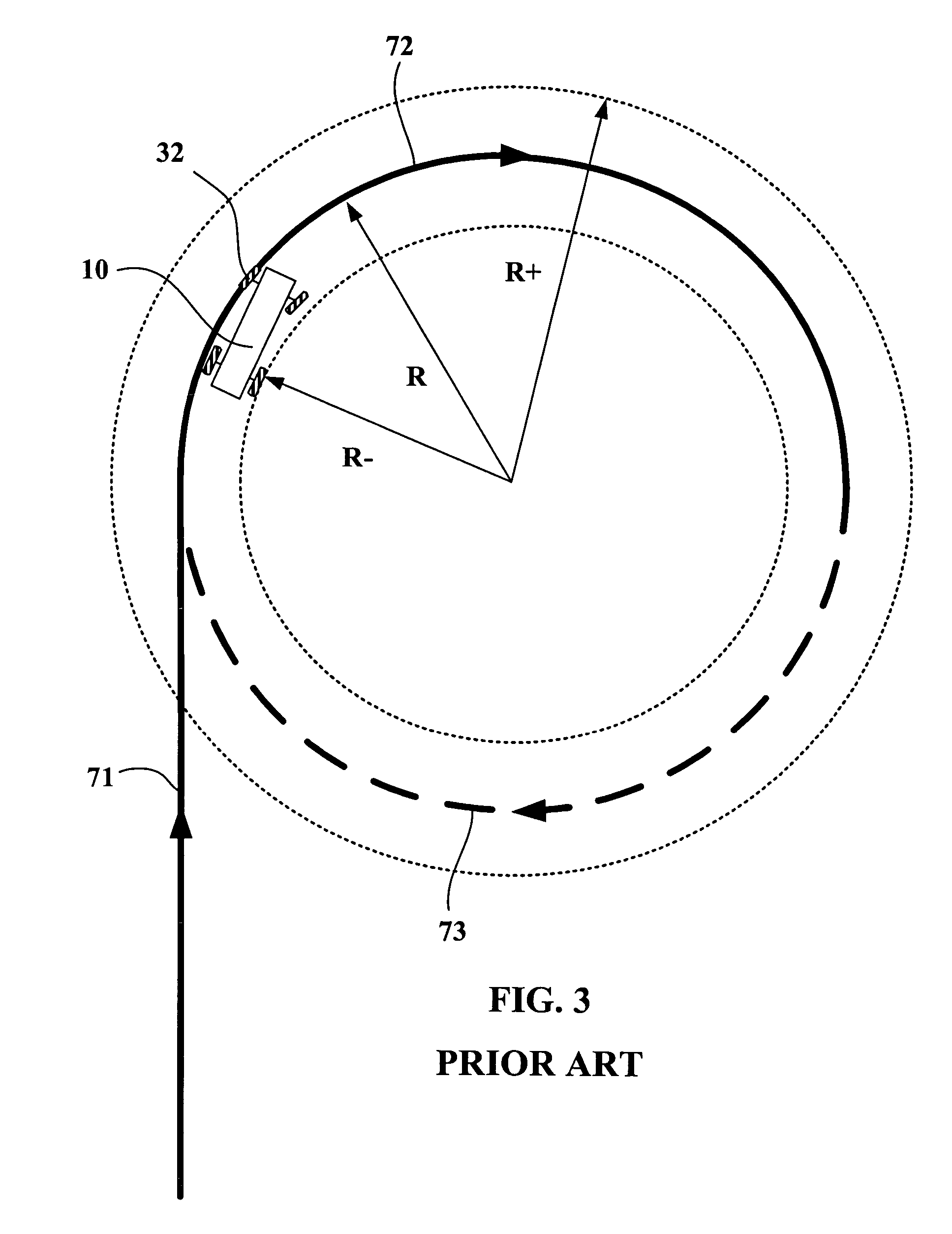Method of unseating a tire
a tire and unseating technology, applied in the direction of vehicle testing, structural/machine measurement, ways, etc., can solve the problems of weak reproducibility, inability to satisfactorily reproduce, and considerable deterioration of rolling performance, so as to reduce the surface area necessary, reduce the duration of the test, and precisely measure the behavior of the tire
- Summary
- Abstract
- Description
- Claims
- Application Information
AI Technical Summary
Benefits of technology
Problems solved by technology
Method used
Image
Examples
second embodiment
[0053]FIG. 8 shows the invention in which the trajectory 100 traveled by the tire and wheel assembly 32 until one of the two conditions (i) or (ii) is fulfilled is an uninterrupted succession of arcs of circles. As in the previous embodiment, the steering axle 21 of the vehicle 10 is equipped with a tire and wheel assembly 32 comprising the tire to be evaluated, the inflation pressure of which is zero. The vehicle starts off at the constant speed of 60 km / h along a straight line 71. Having reached point 110, the driver increases the steering angle with a speed of rotation of the steering wheel of greater than 500° per second. The test conditions (fitting of tire, direction of rotation of steering wheel) are selected such that the tire and wheel assembly 32 is located on the side of the vehicle 10 which is on the outside relative to the centre of curvature of each trajectory portion. In the example shown, the steering angle is increased in steps of discrete values: it is maintained f...
first embodiment
[0054]The principal difference relative to the first embodiment relates to the trajectory traveled by the tire and wheel assembly 32 between two trajectory portions consisting of arcs of circles. Instead of returning the vehicle 10 to the starting point, the driver immediately proceeds to increase the steering angle, which has the effect of causing the tire and wheel assembly 32 to travel over a trajectory in the form of a spiral, composed of a plurality of arcs of circles whose radii of curvature diminish progressively. The points 111 to 113 correspond to the changes in steering angle. The steering angle is increased until at least one condition selected from among the following is fulfilled: (i) the tire becomes unseated or (ii) the steering wheel of the vehicle 10 reaches its stop. The transverse acceleration of the vehicle 10 is recorded for each value of the steering angle.
[0055]FIG. 9 shows another embodiment of the invention in which two successive arcs of circles are separat...
PUM
 Login to View More
Login to View More Abstract
Description
Claims
Application Information
 Login to View More
Login to View More - R&D
- Intellectual Property
- Life Sciences
- Materials
- Tech Scout
- Unparalleled Data Quality
- Higher Quality Content
- 60% Fewer Hallucinations
Browse by: Latest US Patents, China's latest patents, Technical Efficacy Thesaurus, Application Domain, Technology Topic, Popular Technical Reports.
© 2025 PatSnap. All rights reserved.Legal|Privacy policy|Modern Slavery Act Transparency Statement|Sitemap|About US| Contact US: help@patsnap.com



